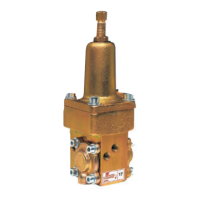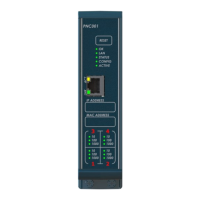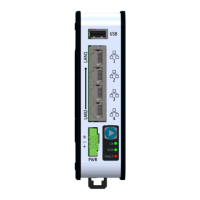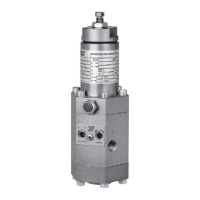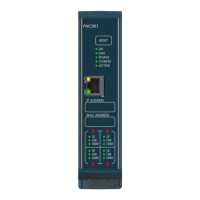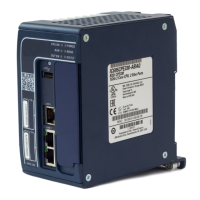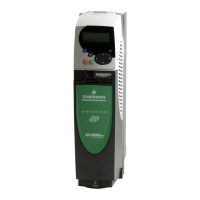Although it is not usually necessary, the d.c. bus voltage controller gain can be adjusted with the Voltage Controller Gain (05.031). However, it may be
necessary to adjust the current controller gains to obtain the required performance. If the gains are not suitable it is best to set up the drive in torque
control first. Set the gains to a value that does not cause instability around the point at which field weakening occurs. Then revert back to open loop
speed control in standard ramp mode. To test the controller, the supply should be removed whilst the motor is running. It is likely that the gains can be
increased further if required because the d.c. bus voltage controller has a stabilising effect, provided that the drive is not required to operate in torque
control mode.
Parameter 04.014 Current Controller Ki Gain
Short description Defines the current loop controller integral gain
Mode Open‑Loop
Minimum 0 Maximum 30000
Default 40 Units
Type 16 Bit User Save Update Rate Background read
Display Format Standard Decimal Places 0
Coding RW
See Current Controller Kp Gain (04.013).
Parameter 04.015 Motor Thermal Time Constant 1
Short description Set to the thermal time constant for the motor
Mode Open‑Loop
Minimum 1.0 Maximum 3000.0
Default 89.0 Units s
Type 16 Bit User Save Update Rate Background read
Display Format Standard Decimal Places 1
Coding RW
A dual time constant thermal model is provided that can be used to estimate the motor temperature as a percentage of its maximum allowed
temperature. The input to the model is the Current Magnitude (04.001). Throughout the following discussion Rated Current (05.007) is used in the
model assuming Select Motor 2 Parameters (11.045) = 0. If Select Motor 2 Parameters (11.045) = 1 then M2 Rated Current (21.007) is used instead. It
should be noted that if the parameters that have been added in addition to those in Unidrive SP are left at their default values the model is a simple
single time constant model as provided in Unidrive SP.
Percentage Losses
The losses in the motor are calculated as a percentage value.
Percentage Losses = 100% x [Load Related Losses + Iron Losses]
where:
Load Related Losses = (1 - K
fe
) x (I / (K
1
x I
Rated
))
2
Iron Losses = K
fe
x (w / w
Rated
)
1.6
where:
I = Current Magnitude (04.001)
I
Rated
= Rated Current (05.007)
K
fe
= Rated Iron Losses As Percentage Of Losses (04.039) / 100%
The iron losses are relatively low in motors that have a rated frequency of 60Hz or less, and so the motor could be modelled based on load related
losses alone. This can be done by setting K
fe
to zero. In motors where iron losses are significant, K
fe
defines the proportion of losses that are iron
losses under rated conditions (i.e. rated current and rated frequency). For example if the iron losses are 30% of losses and other losses are 70% of
losses under rated conditions Rated Iron Losses As Percentage Of Losses (04.039) should be set to 30%.
The value of K
1
defines the continuous allowable motor overload as a proportion of the Rated Current (05.007) before the Motor Protection Accumulator
(04.019) reaches 100%. The value of K
1
can be used to model reduced cooling at low speeds and to allow the motor to operate under rated conditions
with a small margin to prevent spurious trips. K
1
is defined in more detail later.
Motor Protection Accumulator
So far the steady state motor losses have been defined, but the motor model must estimate the temperature within the motor under dynamically
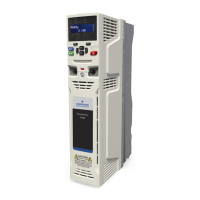
